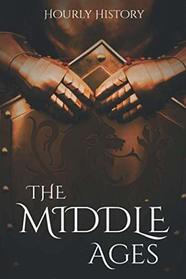Helpful Score: 1
The Middle Ages began with the fall of the Roman Empire (476 CE) and ended around the 14th-century (at 'the outbreak of intellectual inspiration'), better known as the Renaissance. The Middle Ages were often referred to as the Dark Ages. This is a well-written overview of approximately 1000 years. Because so much happened during these years, scholars divided those 1000 years into Early, High, and Late Middle Ages.
This book from Hourly History follows their usual path of high quality, interesting, and concise explanations of the subject under scrutiny. Most of their books can be read in an hour or less. The Early Middle Ages was spent trying to create new national borders without the Romans to provide roads, trade, and governmental structures. I was not aware (before reading this book) that the western countries all used Latin for official documents and the eastern countries of Europe used Greek.
The author makes an important point that when the Romans disappeared, the Church took over many aspects of governance and daily life. The monasteries became centers of learning for the children, monks distilled herbal remedies for medical treatment and developed liquor/spirits for sale.
The Late Middle Ages saw about 100 million people in Europe. I was surprised to read that between 1347 and 1350, between 25% to 45% of that population died. There weren't enough people left alive to keep up with the burials. The Plague would return from time-to-time, but the devastation must have been terrifying for everyone, but particularly the peasants.
With so few people left, wages rose for those remaining and life became easier. With trade, people prospered and began to look around their world. The tight hold of the Church started to lessen, printing became common, more people could read, people wanted to interpret the Bible for themselves and study ancient books and manuscripts. Learning was valued, while intellectual and artistic skills became more important. The world was ready for the Rennaissance.
This is a fine book to add to my library of historical studies. It is well worth my time.
This book from Hourly History follows their usual path of high quality, interesting, and concise explanations of the subject under scrutiny. Most of their books can be read in an hour or less. The Early Middle Ages was spent trying to create new national borders without the Romans to provide roads, trade, and governmental structures. I was not aware (before reading this book) that the western countries all used Latin for official documents and the eastern countries of Europe used Greek.
The author makes an important point that when the Romans disappeared, the Church took over many aspects of governance and daily life. The monasteries became centers of learning for the children, monks distilled herbal remedies for medical treatment and developed liquor/spirits for sale.
The Late Middle Ages saw about 100 million people in Europe. I was surprised to read that between 1347 and 1350, between 25% to 45% of that population died. There weren't enough people left alive to keep up with the burials. The Plague would return from time-to-time, but the devastation must have been terrifying for everyone, but particularly the peasants.
With so few people left, wages rose for those remaining and life became easier. With trade, people prospered and began to look around their world. The tight hold of the Church started to lessen, printing became common, more people could read, people wanted to interpret the Bible for themselves and study ancient books and manuscripts. Learning was valued, while intellectual and artistic skills became more important. The world was ready for the Rennaissance.
This is a fine book to add to my library of historical studies. It is well worth my time.




